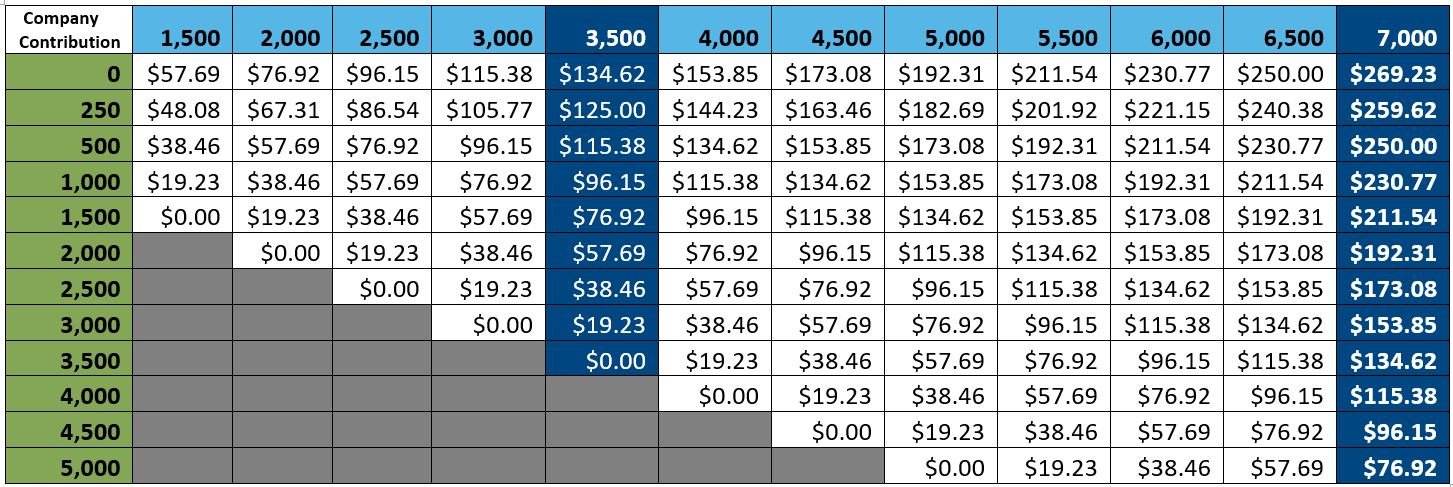6 Things That Fortnite Can Teach You About Financial Wellness
February 15, 2019What does America’s obsession with Fortnite have to do with making the most of your financial wellness benefit? Surprisingly, more than you would think. Fortnite is on track to be the most popular video game in history and is currently beating out television and movies for user engagement. For those who play it regularly, it’s become part of their identity – inspiring dance moves, fashion and online commentary.
I’ve got a son in middle school, so I’ve witnessed this up close. He and his buddies are obsessed with all aspects of the game. What keeps them, and the millions of other players, so engaged, and how can we apply those factors to changing our own financial behaviors?
1. Collect and construct.
Fortnite draws in the new user through its “collect and construct” feature, where the player goes into the battle with a tool they can use to chop down and collect objects and then uses those materials to construct structures to advance in the game. An effective financial wellness program impacts you in a similar way, inviting you to collect the building blocks of financial health and use them to construct good financial habits. For example:
- Tracking expenses to develop a spending plan;
- Pulling together accounts, online and social media information to develop a digital estate plan;
- Gathering account data and goals to run a retirement projection ( See Want to Retire 3 Years Sooner? This Benefit Could Be Your Ticket); or
- Taking inventory of credit cards and student loans to pay down debt more efficiently.
2. Engage and entertain.
How does Epic Games keep players coming back again and again to play? It’s contagiously fun – and doesn’t take itself too seriously. Characters are called “skins,” with a range of colorful, anthropomorphic animation. You can get them to dance by using an “emote” – and learn it yourself if you’re inclined.
An effective financial wellness program helps you to improve your financial habits by encouraging repeat usage. Pay attention to the various ways that you can access your benefit and take advantage:
- Gamification of tools and resources – making it fun to progress;
- Multimedia learning tools so you can learn in the style which works best for you;
- Coaching to empower you to make changes (vs. advice which keeps the power with the advisor); and
- Facilitated workshops and webcasts which use the power of “show not tell” to create “aha” moments.
3. Play alone or with a friend.
Sometimes you want to be alone and sometimes with companions. Fortnite lets gamers play in teams (“squads”) or play on their own (“playground mode”). Financial wellness programs offer multiple ways to engage, including:
- Self-directed learning online using articles, blog posts, multimedia planning tools, videos and podcasts;
- In-person and telephone coaching conversations with a CERTIFIED FINANCIAL PLANNER™ professional or financial counselor; and
- Group learning using facilitated workshops, webcasts and peer-to-peer coaching groups.
4. Leave you wanting more.
Did you ever try to get your teenager off of Fortnite to come to the dinner table? It’s so difficult. That’s because Fortnite is “sticky.” Gamers are rewarded in some way every single match. While it may be easier to get someone in the middle of running a retirement projection to pause for dinner than to lure your teenager, aim for “stickiness” in your financial wellness journey:
- Break up action steps into bite-sized, achievable pieces;
- Start high level and drill down when you need to – look for a big picture summary and ways to dive deeper; and
- What’s in it for me – take advantage of opportunities to personalize your financial wellness benefit so that you can practically and easily apply what you’re learning to your financial life.
5. Avoid overload.
Has the Fortnite player in your life ever had a Fortnite induced meltdown? Not so fun, right? Too much of that kind of intense neurological stimulation can activate the fight or flight mechanism in the human brain. Financial wellness is a process and a practice, not an event. That means:
- Define your goals then prioritize them one at a time;
- Tackle tasks one thing at a time and don’t try to do everything at once; and
- Be gentle with yourself – work at the pace that works for you, and don’t worry about your colleagues and friends.
6. You don’t have to pay to play – but watch out for a hidden sales pitch
A basic version of Fortnite can be downloaded for free and anyone with a compatible device can play. Truly unbiased financial wellness programs are offered as an employer-paid benefit. It should be offered at no cost to you – without any sales of financial products or services.
Unfortunately, some financial services providers are now using the term “financial wellness” to try and earn insurance or investment sales from employees. Beware! That’s just like downloading Fortnite Battle Royal then getting tempted to buy lots of V-Bucks. Not sure if your program is an unbiased financial wellness program? See this infographic.
Do you have to actually play Fortnite to become better at improving your own financial wellness? Not unless you want to take inspiration from a successful video game. I encourage you, however, to take a few steps today and then keep going. With all the time you’ll save once you’ve gotten your finances in order, you’ll have more time to work on perfecting your floss.


